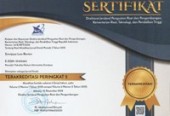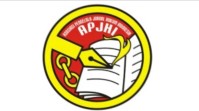The Rationalization of Debt Discharge Policy for Individual Debtors in Indonesian Bankruptcy Regime
Abstract
Keywords
Full Text:
PDFReferences
Ali, Muhammad Daud. Hukum Islam: Pengantar Ilmu Hukum Dan Tata Hukum Islam Di Indonesia. Jakarta: Rajawali Pers, 2009.
Anisah, Siti. Perlindungan Kepentingan Kreditor Dan Debitor Dalam Hukum Kepailitan Di Indonesia. Yogyakarta: Total Media, 2008.
———. “Studi Komparasi Terhadap Perlindungan Kepentingan Kreditor Dan Debitor Dalam Hukum Kepailitan.” Jurnal Hukum 16, no. Edisi Khusus (2009): 30–50.
Asyhadie, Zaeni, and Budi Sutrisno. Hukum Perusahaan & Kepailitan. Jakarta: Erlangga, 2012.
Atkinson, Abbye. “Consumer Bankruptcy, Nondischargeability, and Penal Debt.” Vanderbilt Law Review 70, no. 3 (2017): 917–83.
Azmi, Ruzita, Adilah Abdul Razak, and Siti Nur Samawati Ahmad. “Discharge in Bankruptcy: A Comparative Analysis of Law and Practice Between Malaysia, Singapore and the United Kingdom (UK) - What Can We Learn?” Commonwealth Law Bulletin 43, no. 2 (2017): 203–33.
Backer McKenzie. “Global Restructuring & Insolvency Guide,” 2016. http://restructuring.bakermckenzie.com/wp-content/uploads/sites/23/2016/12/Global-Restructuring-Insolvency-Guide-New-Logo-France.pdf.
Bos van der Burg Advocaten. “Debt Restructuring for Self-Employed Professionals in the Netherlands.” International Network of Law and Consulting Firms, 2019. https://pragma.international/article/debt-restructuring-for-self-employed-professionals-in-the-netherlands.
Clement, Leia A. “A Study on Bankruptcy Crime Prosecution under Title 18: Is the Process Undermining the Goals of the Bankruptcy System.” Emory Bankruptcy Developments Journal 31, no. 2 (2015): 409–30.
Efrat, Rafael. “The Evolution of Bankruptcy Stigma.” Theoretical Inquiries in Law 7, no. 1 (2006): 364–93.
Elias, Stephen R. The New Bankruptcy: Will It Work for You? 4th ed. California: NOLO, 2011.
Feeney, Joan N., and Theodore W. Connoly. The Road Out of Debt: Bankruptcy and Other Solutions to Your Financial Problems. New Jersey: John Wiley & Sons, Inc., 2010.
Finnis, John. Natural Law & Natural Rights. 2nd ed. New York: Oxford University Press, 2011.
Flint, Richard E. “Bankruptcy Policy: Toward A Moral Justification for Financial Rehabilitation of the Consumer Debtor.” Washington and Lee Law Review 48, no. 2 (1991): 515–77.
Gross, Karen. Failure and Forgiveness: Rebalancing the Bankruptcy System. New Haven: Yale University Press, 1997.
Herdiawanto, Heri, Fokky Fuad Wasitaatmadja, and Jumanta Hamdayama. Spiritualisme Pancasila. Jakarta: Prenada Media, 2018.
Hirsch, Adam J. “Inheritance and Bankruptcy: The Meaning of the ‘Fresh Start.’” Hastings Law Journal 45, no. 2 (1994): 175–248.
Hynes, Richard M. “Why (Consumer) Bankruptcy?” Alabama Law Review 56, no. 1 (2004): 121–79.
Jackson, Thomas H. “The Fresh-Start Policy in Bankruptcy Law.” Harvard Law Review 98, no. 7 (1985): 1393–1448.
———. The Logic and Limits of Bankruptcy Law. Washington D.C.: BeardBooks, 2001.
Jacobson, Richard B. “The Structure of Forgiveness.” Cardozo Studies in Law and Literature 4, no. 2 (1992): 243–53.
Jordan, Robert L., and William D. Warren. Bankruptcy. 3rd ed. New York: The Foundation Press, Inc., 1993.
Kaelan. Etika Kehidupan Berbangsa: Prinsip-Prinsip Etika Dalam Kehidupan Berbangsa Dan Bernegara Berdasarkan Pancasila. Yogyakarta: Paradigma Press, 2018.
———. Negara Kebangsaan Pancasila: Kultural, Historis, Filosofis, Yuridis Dan Aktualisasinya. Yogyakarta: Paradigma Press, 2013.
———. The Philosophy of Pancasila: The Way of Life of Indonesian Nation. Yogyakarta: Paradigma Press, 2014.
Kilborn, Jason J. “Foundation of Forgiveness in Islamic Bankruptcy Law: Sources, Methodology, Diversity.” American Bankruptcy Law Journal 85 (2011): 323–54.
———. “La Responsabilisation de L’economie: What the United States Can Learn from the New French Law on Consumer Overindebtedness.” Michigan Journal of International Law 26, no. 2 (2005): 619–71.
———. “Mercy, Rehabilitation, and Quid Pro Quo: A Radical Reassessment of Individual Bankruptcy.” Ohio State Law Journal 64, no. 3 (2003): 855–96.
Kilpi, Jukka. The Ethics of Bankruptcy. New York: Routledge, 1998.
King, John. “Moving Beyond the ‘Hard’-’Easy’ Tug of War: A Historical, Empirical and Theoretical Assessment of Bankruptcy Discharge.” Melbourne University Law Review 28, no. 3 (2004): 654–89.
Korobkin, Donald R. “Rehabilitating Values: A Jurisprudence of Bankruptcy.” Columbia Law Review 91, no. 4 (1991): 717–89.
Latif, Yudi. Negara Paripurna: Historisitas, Rasionalitas, Dan Aktualitas. 5th ed. Jakarta: Gramedia Pustaka Utama, 2015.
Local Loan Co. v. Hunt (292 U.S. 234) (1934).
Marzuki, Peter Mahmud. Penelitian Hukum. Revised. Jakarta: Prenada Media, 2013.
McCoid, John C. “Discharge: The Most Important Development in Bankruptcy History.” American Bankruptcy Law Journal 70, no. 2 (1996): 163–94.
McCullough, Ralph C. “Bankruptcy Fraud: Crime without Punishment II.” Commercial Law Journal 102, no. 1 (1997): 1–54.
Milman, David, and Chris Durrant. Corporate Insolvency: Law and Practice. London: Sweet & Maxwell, 1999.
Morgan Lewis & Bockius LLP. “Strange Effects of the UK’s New Insolvency Law,” 2020. https://www.lexology.com/library/detail.aspx?g=29cec1a0-5c67-472f-9b5e-bd9866bf7a02.
Netherlands Enterprise Agency. “Debt Restructuring.” Business.gov.nl. Accessed November 29, 2020. https://business.gov.nl/regulation/debt-restructuring/.
Ramsay, Iain. “The New Poor Person’s Bankruptcy: Comparative Perspectives.” International Insolvency Review 29, no. 1 (2020): 4–24.
Ratnapala, Suri. Jurisprudence. Melbourne: Cambridge University Press, 2009.
Republik Indonesia. Bankruptcy and Suspension of the Payment (2014).
———. Indonesian Civil Code (n.d.).
———. Limited Liability Company (2007).
Robert, and Bismar Nasution. “Adoption of Islamic Bankruptcy Law Values into Indonesian Bankruptcy Law to Protect Good Faith Debtors.” In 1st International Conference on Law, Governance and Islamic Society (ICOLGIS 2019), 157–61. Banda Aceh: Atlantis Press, 2020.
Shubhan, M.Hadi. Hukum Kepailitan: Prinsip, Norma, Dan Praktik Di Pengadilan. 3rd ed. Jakarta: Prenada Media, 2012.
Shuchman, Philip. “An Attempt at a Philosophy of Bankruptcy.” UCLA Law Review 21, no. 2 (1973): 403–76.
Sjahdeini, Sutan Remy. Sejarah, Asas, Dan Teori Hukum Kepailitan: Memahami Undang-Undang Nomor 37 Tahun 2004 Tentang Kepailitan Dan Penundaan Kewajiban Pembayaran Utang. 2nd ed. Jakarta: Prenada Media, 2016.
Skeel Jr., David A. “When Should Bankruptcy Be an Option (for People, Places, or Things)?” William & Mary Law Review 55, no. 6 (2014): 2217–52.
Soeroso, R. Pengantar Ilmu Hukum. Jakarta: Sinar Grafika, 2017.
Sousa, Michael D. “A Delicate Balancing Act: Satisfying the Fourth Amendment While Protecting the Bankruptcy System from Debtor Fraud.” Yale Journal on Regulation 28, no. 2 (2011): 367–417.
———. “The Principle of Consumer Utility: A Contemporary Theory of the Bankruptcy Discharge.” Kansas Law Review 58, no. 3 (2010): 553–614.
Spooner, Joseph. “Explaining Personal Insolvency and the Law,” 2020. https://www.law.ox.ac.uk/housing-after-grenfell/blog/2020/07/explaining-personal-insolvency-and-law.
Stowell, Nicole Forbes, and Katherine Barker. “Fraud, Fraud, Fraud: Mortgage Fraud and Bankruptcy Fraud.” Real Estate Review 40, no. 2 (2011): 47–62.
Tabb, Charles Jordan. “The Historical Evolution of the Bankruptcy Discharge.” American Bankruptcy Law Journal 65, no. 1 (1991): 325–71.
———. “The History of the Bankruptcy Laws in the United States.” American Bankruptcy Institute Law Review 3 (1995): 5–51.
———. “The Scope of the Fresh Start in Bankruptcy: Collateral Conversions and the Dischargeability Debate.” The George Washington Law Review 59, no. 1 (1990): 56–113.
Toha, Kurnia, and Sonyendah Retnaningsih. “Legal Policy Granting Status of Fresh Start to the Individual Bankrupt Debtor in Developing the Bankruptcy Law in Indonesia.” Academic Journal of Interdisciplinary Studies 9, no. 2 (2020): 157–61.
Trumbull, Gunnar. “Consumer Protection in French and British Credit Markets,” 2008. https://www.jchs.harvard.edu/sites/default/files/media/imp/ucc08-17_trumbull.pdf.
United States Courts. “Chapter 7 - Bankruptcy Basics,” 2020. https://www.uscourts.gov/services-forms/bankruptcy/bankruptcy-basics/chapter-7-bankruptcy-basics.
Widjaja, Gunawan. Seri Hukum Bisnis: Daluwarsa. Jakarta: RajaGrafindo Persada, 2005.
Wignjosoebroto, Soetandyo. Pedoman & Tata Cara Penulisan Disertasi. Malang: Madani, 2017.
Yaqin, Anwarul. Legal Research and Writing. Petaling Jaya: Dophin Press, Sdn. Bhd., 2007.
Zeigler, Luther. “The Fraud Exception to Discharge in Bankruptcy: A Reappraisal.” Stanford Law Review 38, no. 3 (1986): 891–918.
Zweigert, Konrad, and Hein Kotz. An Introduction to Comparative Law. Third. New York: Oxford University Press, 1998.
Zywicki, Todd J. “Bankruptcy Law as Social Legislation.” Texas Review of Law & Politics 5, no. 2 (2001): 1–32.
DOI: http://dx.doi.org/10.28946/slrev.Vol6.Iss1.928.pp101-121
Refbacks
- There are currently no refbacks.

Sriwijaya Law Review (SLRev) ISSN: 2541-5298 | e-ISSN: 2541-6464 is licensed under a Creative Commons Attribution-ShareAlike 4.0 International License.






















